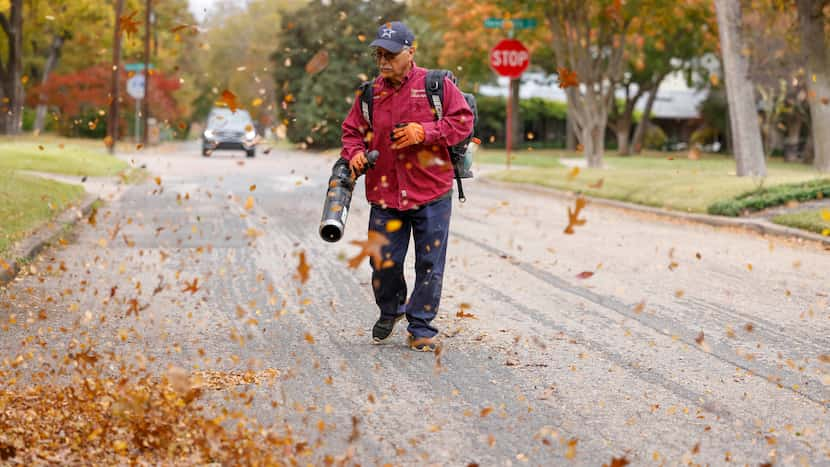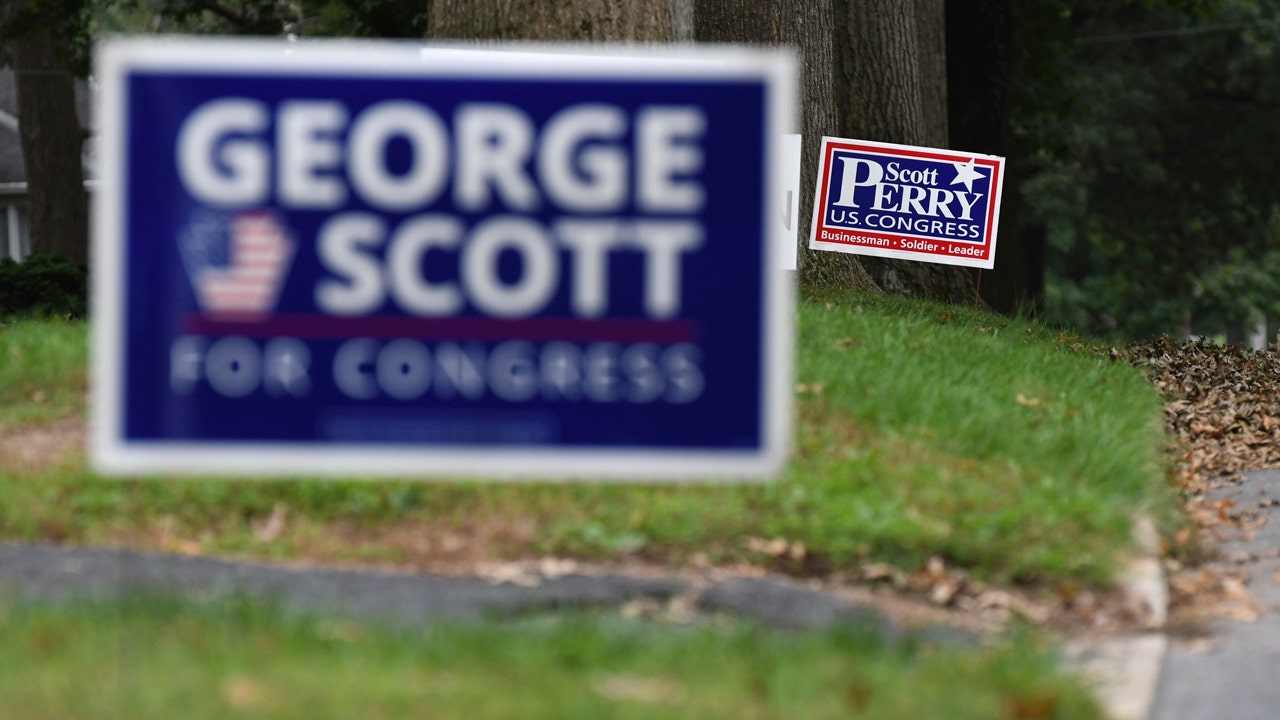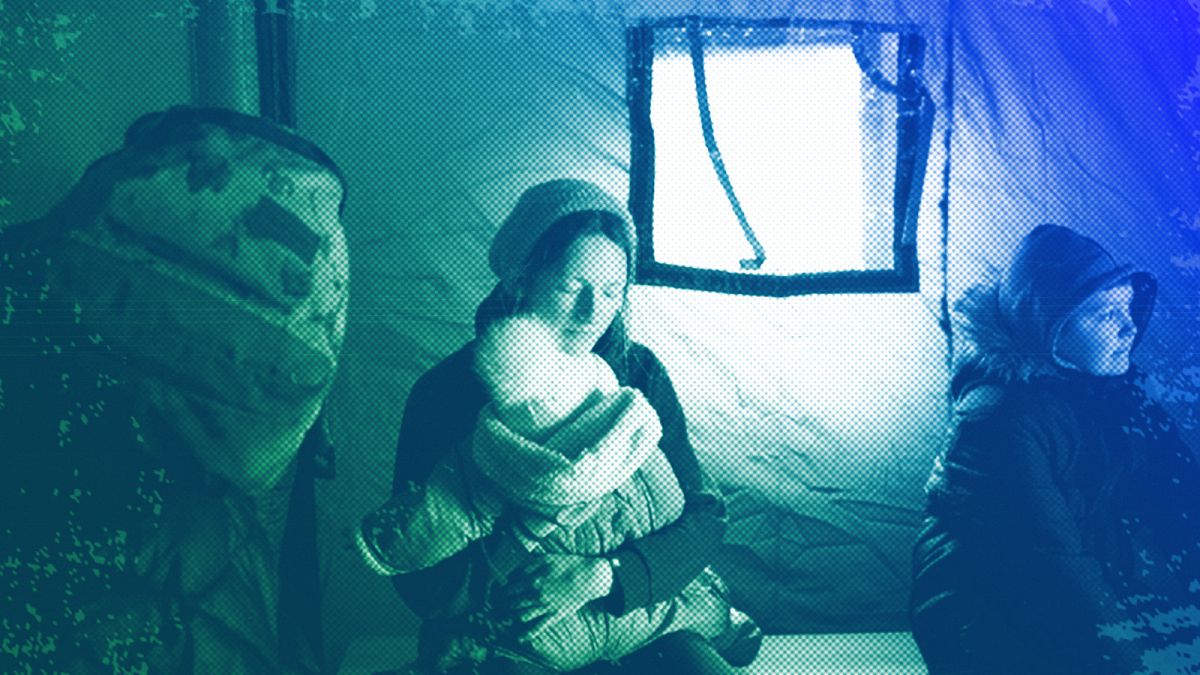Colorado
More generations living under one roof as Coloradans battle high housing costs, caregiving needs

Steve Chapman’s full house sometimes feels like it’s bursting at the seams.
The 45-year-old and his wife welcomed Chapman’s mother and stepdad into their Aurora home a few years ago after his mom’s landlord sold the Loveland trailer the couple lived in, leaving them unable to afford Colorado rent on their Social Security income.
“The idea was it’d be temporary to help them get going, but it’s impossible to make it here, it seems,” Chapman said of the living arrangement.
Then the Chapmans’ 23-year-old daughter fell on financial hard times while working and pursuing her education at Arapahoe Community College. She moved into her parents’ home to save on rent. Now their eldest daughter, who lives in Nevada, is planning to move home, too.
Chapman said he feels fortunate he’s able to support his family in a four-bedroom home where everyone has their own space. But it’s a fine line between feeling cozy and crowded.
“Realistically, me and my wife are having to come to terms with the fact that this might be forever,” he said. “I don’t know if I see a viable way for this to change. It’s not like my parents are getting younger.”
Multigenerational households — homes where at least two generations of adults live — are on the rise in Colorado and across the United States. The share of the American population living in multigenerational homes has more than doubled over the past five decades, according to Pew Research, from 7% in 1971 to 18% in 2021.
In Colorado, the share of the population living in multigenerational households is about 3.7%, according to 2020 Census data. That means around 71,300 households in the state feature multiple adult generations living under one roof, up from 51,400 households in 2010 — a nearly 40% increase over the decade.
Experts point to Colorado’s steep housing market, caregiving needs for elders and children, and changing demographics and multicultural traditions as reasons for the rise in families living together.
Colorado boasts four of the most expensive noncoastal housing markets in the nation. In the Denver area, the median price of a single-family home sold in December came in at $613,500, according to data from the Denver Metro Association of Realtors. The median price in 2013 was $290,000, according to the S&P/Case-Shiller Home Price Indices, amounting to a more than 110% increase in a decade.
Whatever the reason, said Donna Butts, executive director of the nonprofit Generations United, multigenerational households are the way of the future.
“Those who do choose to live together should be valued and respected and, unfortunately, in this country, we look at multigenerational households as having a stigma or that something is wrong, and it’s not,” she said. “Oftentimes, it’s very, very right. Families pool their resources and they live together and support each other. There’s nothing wrong with that.”
Realizing the value of family
Thor Kieser, his wife and their 8-year-old daughter live in a two-bedroom home in Golden. Kieser’s father-in-law recently immigrated from the Philippines and can’t afford a place of his own, so Grandpa sleeps on a mattress in the laundry room.
The living arrangement works well for 65-year-old Kieser, he said, because he gets the support he needs.
A few years ago, Kieser was diagnosed with stage 4 melanoma, which he overcame. Then, in 2022, he had a serious climbing accident in which he fell and broke 17 bones.
“It was one of those ‘barely survive’ situations,” Kieser said. “But I survived it, and here I am.”
Kieser’s accident resulted in health problems that impacted his mobility and ability to work. He uses a walker to get around and needs assistance getting to and from a slew of medical and physical therapy appointments.
Grandpa takes his granddaughter to elementary school in the morning. He drives Kieser to his oncology appointments, gastroenterologist and physical therapy sessions, and helps around the house while Kieser’s wife works as a certified nursing assistant during the day.
“It works out for us because I need that helping hand,” Kieser said.
Caregiving is a big reason why families are choosing to move in together, Butts said.
The mission of Generations United, the organization Butts leads, centers on improving the lives of kids and elders through intergenerational collaborations, public policies and programs.
During the pandemic, she said, families came together to support each other amid the stresses of a new frontier. Families found that caregiving — whether for children or aging parents — became easier with more people in the home. Incomes could be pooled for more affordable rents. Elderly folks at risk of isolation were around loved ones.
“We need to change our mindset and realize there is great value and importance in families staying together,” Butts said.
“We all help with something”
Many cultures already have adopted this mindset, Butts said.
Multigenerational living is rising partly because the demographic groups comprising most of the recent U.S. population growth — including Asian, Black, Hispanic and foreign-born people — are more likely to live with multiple generations, according to Pew Research.
Diana Cobos Ocaña, 47, lives with her husband, their 12- and 14-year-old children, and her 87-year-old widowed mother in their Morrison home.
Cobos Ocaña grew up in Colombia, where she said it’s not traditional to put elders in nursing homes.
“Besides, she is a great help,” Cobos Ocaña said. “Our kids love having Abuelita” — Spanish for Grandma — “at home, and they are required to speak Spanish to her and teach her English expressions, so that’s another way to preserve our language.”

Thirty percent of the adults in multigenerational households surveyed by Pew say the experience has been very positive while 27% label it as somewhat positive. That’s far more than the 14% who think it’s been somewhat negative or 3% who say it’s been very negative.
Cobos Ocaña and her husband are both teachers. When they go off to work and the kids go to school, she said her mother takes care of the home by cleaning and preparing meals.
“I enjoy the freedom that I feel when I have everybody in charge of something,” Cobos Ocaña said. “Everybody — my mom, my husband, my kids, myself — we all help with something.”

Feed me to the tigers
In 2014, for the first time in more than 130 years, adults between the ages of 18 and 34 were more likely to live in their parents’ home than they were to live with a partner in their own household, according to Pew, which attributed the change to “the dramatic drop in the share of young Americans who are choosing to settle down romantically before age 35.”
Overall, men and women are equally likely to live in a multigenerational house, but men are more likely to do so when they’re under 40 and women are more likely when they’re over 40, researchers found. Among the oldest Americans — 65 and older — 20% of women live in multigenerational households, compared with 15% of men, Pew said.
A third of U.S. adults in multigenerational households cite caregiving as a major reason for their living arrangement, including 25% who noted adult caregiving and 12% who noted child care, according to Pew.
Evelyn Baker joked that she could write a doozy of a self-help book about the trials and tribulations of trying to date as a single mother of teenage boys living with an elderly parent during a global pandemic.
At the height of COVID-19, the 53-year-old Baker searched for a housing situation that would allow her to better care for her octogenarian mother with Parkinson’s disease.
Baker looked into Lennar’s Next Gen homes, which offer a house with a connected suite with a private entrance to “provide all the essentials multigenerational families need to work, learn, create or have a sense of independence,” the company’s website said. Baker was told they were so popular that none were available at the time, but she was persistent and managed to snag one in the Central Park neighborhood that fell out of escrow in 2020.
“We felt really fortunate,” she said.
Baker’s mother grew up in the Philippines, where multigenerational households are more common. But Baker was born in the U.S.
“There’s an interesting multicultural thing happening, where I feel sort of beholden to some of those cultural expectations,” she said.
On one hand, Baker said the living arrangement has been a blessing. Her children have been able to spend time with their grandmother and understand the Filipino elder in a way they wouldn’t have otherwise, she said.
“I feel really lucky to have had this time, too, though it’s really hard,” Baker said.
Baker isn’t able to have much of a social life, she said, because she comes home from work to relieve her mother’s in-home caretaker. Baker does the cooking and cleaning and struggles to find time and space for herself, she said, while managing anticipatory grief over her mother’s declining health.
“Plus, even as a grown-ass woman, when we moved back in together, all of a sudden all those mother/daughter dynamics come flooding back, and it felt like, ‘Oh my God, I’m 15 again,’” Baker said.
Baker recognizes the financial privilege her family has in being able to purchase a home with space for everyone and to be able to afford in-home care.
“It highlights for me how sucky we are as a culture in figuring out how to deal with aging in this society right now,” Baker said. “We’re lucky to have the resources to figure out the best possible solution, but even the best possible solution feels untenable and heartbreaking on a daily basis.”
Recently, Baker discussed the possibility of going on a safari vacation with her children and needing to find care for her mother during the trip.
“She asked me to take her with me and feed her to the tigers,” Baker said. “We started joking about a business model that was like an end-of-life safari where you can go out with a bang.”
Butts noted that American culture needs to adopt policies to make multigenerational living a better, easier experience.
For example, she said oftentimes there can only be one homeowner or married couple on an insurance policy or loan for the household. Sometimes there are zoning issues that prevent or discourage too many people from living together, she said.
“There is this old John Wayne mentality that we have to stand on our own when we oftentimes need each other,” Butts said.
“Forced into this position”
University of Colorado Boulder economics professor Terra McKinnish said Colorado’s housing market is playing a significant role in generations needing to move in together to afford rent.
The Baby Boomer generation has acquired significant housing wealth, McKinnish said, but many localities have restricted housing supply to such a degree that it’s generated “enormous wealth” for mostly older, mostly higher-income homeowners.
“But then the housing costs faced by younger generations and lower- and middle-income and non-homeowners are enormous,” McKinnish said. “That’s really affected the ability of younger generations to establish their own separate households compared to the Baby Boomer generation. It’s become much harder for the younger generations to break into homeownership unless they’re getting financial support from Baby Boomer parents who have housing wealth.”
Juan Manuel Ramirez Anzures would like to move out of his grandparents’ West Colfax home, but he’d be shelling out nearly half of his monthly income as a Denver Public Library employee — at least — to afford rent in the city where he grew up.
Anzures’ parents moved to New Mexico when he was a senior in high school so they could finally know life without a mortgage payment hanging over their heads. Anzures moved in with his grandparents and now, at 23, hasn’t been able to afford to leave, he said.
The Denverite has a front-row seat to condo construction around his grandparents’ home. The view is bittersweet. Anzures said he knows more homes need to be built — Colorado is short more than 100,000 housing units, with nearly half of the state’s housing shortfall concentrated in metro Denver — but is worried about gentrification that pushes out marginalized communities.
Living with his grandparents and a cousin isn’t bad, he said. The family eats dinner together and watches telenovelas — Spanish soap operas. But Anzures wants more privacy and the pride of feeling like he can make it on his own.
“Everything is becoming much more challenging to obtain, even the most bare-bones accommodations for oneself,” Anzures said. “It leads to young people experiencing nihilism and despair — that no matter how much I try and try to do things the right way, I’m just stuck or even going in reverse.”
The average rent for a one-bedroom apartment in Denver in January is around $1,600, according to Zillow. That’s a more than 50% increase over 10 years ago, when the average Denver rent was about $1,041.
The disparity has meant young adults are staying in their parents’ homes longer.
Chapman and his adult daughter — soon to be joined by her sister back home in Aurora — know the struggle.
Chapman said he sympathizes with his daughters, who aren’t lazy, but a victim of circumstance. He knows it’s hard to live a lifestyle conducive to being a young adult while crashing with parents, he said.
“We lived our crazy 20s already, so I’m not trying to live that again,” Chapman said. “I know that’s hard on her. But it is our home. You kind of have to choose at this point if you’re going to live your crazy 20s or live with your parents. They’re kind of forced into this position.”
Get more Colorado news by signing up for our daily Your Morning Dozen email newsletter.

Colorado
Thieves steal thousands from family-owned Colorado Springs business

COLORADO SPRINGS, Colo. (KKTV) – Tareja Mitchem says her business has lost over $1400 after people walked out of her business’ front doors with unpaid merchandise. In two separate incidents, the latest happened Thursday night.
“It’s absolutely heartbreaking for us especially because we are brand new to the area,” Mitchem said. “This is a family-owned business. It’s just us and our staff running the store.”
Mitchem tells 11 News she is devastated after these people walked away with thousands of dollars worth of merchandise. She says they loaded up into carts and then piled into the back of their car and drove off.
Not once, but twice in seven days.
“I think it’s the fear of oh my gosh are they going to come back? Is this going to happen again?” Mitchem said.
The family-owned discount store has been open since November. She tells me since moving their closing time from 5 p.m. to 7 p.m. they have seen an uptick in thefts.
According to my neighborhood update dot net, a site recommended by CSPD, there have been 398 reports of burglaries across Colorado Springs just in the last month.
Mitchem says she just wants it to end.
“I want to create a safe environment for our staff. I hate the thought of them feeling unsafe or uncomfortable working here because they don’t know if someone’s gonna come in and try to steal a bunch of items,” Mitchem said.
Copyright 2024 KKTV. All rights reserved.
Colorado
Crews will remove graffiti at Lake Pueblo State Park in Colorado

The graffiti at Lake Pueblo State Park will be cleaned up. Boaters started noticing the vandalism on a specific area of the rocks at the lake last summer.
Removing the graffiti from the rocks requires Colorado Parks and Wildlife to seek help from other companies to prevent chemicals from getting into the water. The area is set to be cleaned in the near future.
“A lot of us have grown up coming to state parks throughout Colorado and Lake Pueblo specifically. This place kind of holds a special place in our heart. We show up here, we work every day. We don’t like to see damage done so we take it just as seriously as everyone else,” Daryl Seder, a senior ranger for Lake Pueblo, told CBS affiliate KKTV in Colorado Springs.
Lake Pueblo State Park is a state park located in Pueblo County that includes 60 miles of shoreline and 10,000 acres of land. It’s located about a two-hour drive from Denver.
Colorado
Kia teams up with Broomfield police in Colorado for free anti-theft vehicle software upgrade

Kia America and the Broomfield Police Department are helping drivers combat auto theft. Both organizations are hosting anti-theft software upgrade events this weekend.
This event goes from 8 a.m. to 6 p.m. at Flatiron Crossing Mall from Friday, May 10 to Sunday, May 12. Kia drivers can expect this to be an easy and free event for them. This is for anyone who owns or even lessees a Kia.
Kia tells CBS News Colorado Traffic Reporter Brian Sherrod you don’t need an appointment; you can just show up. Along with the free software upgrade, steering wheel locks will also be given out.
The Broomfield Police Department and Colorado Auto Theft Prevention Authority are also at the event to provide auto theft prevention tips and information.
-

 Politics1 week ago
Politics1 week agoThe White House has a new curator. Donna Hayashi Smith is the first Asian American to hold the post
-

 News1 week ago
News1 week agoPolice enter UCLA anti-war encampment; Arizona repeals Civil War-era abortion ban
-

 Politics1 week ago
Politics1 week agoAdams, NYPD cite 'global' effort to 'radicalize young people' after 300 arrested at Columbia, CUNY
-

 World1 week ago
World1 week agoTurkish police arrest hundreds at Istanbul May Day protests
-

 News1 week ago
News1 week agoVideo: Police Arrest Columbia Protesters Occupying Hamilton Hall
-
)
) Movie Reviews1 week ago
Movie Reviews1 week agoThe Idea of You Movie Review: Anne Hathaway’s honest performance makes the film stand out in a not so formulaic rom-com
-

 News1 week ago
News1 week agoSome Republicans expected to join Arizona Democrats to pass repeal of 1864 abortion ban
-

 Politics1 week ago
Politics1 week agoNewsom, state officials silent on anti-Israel protests at UCLA























